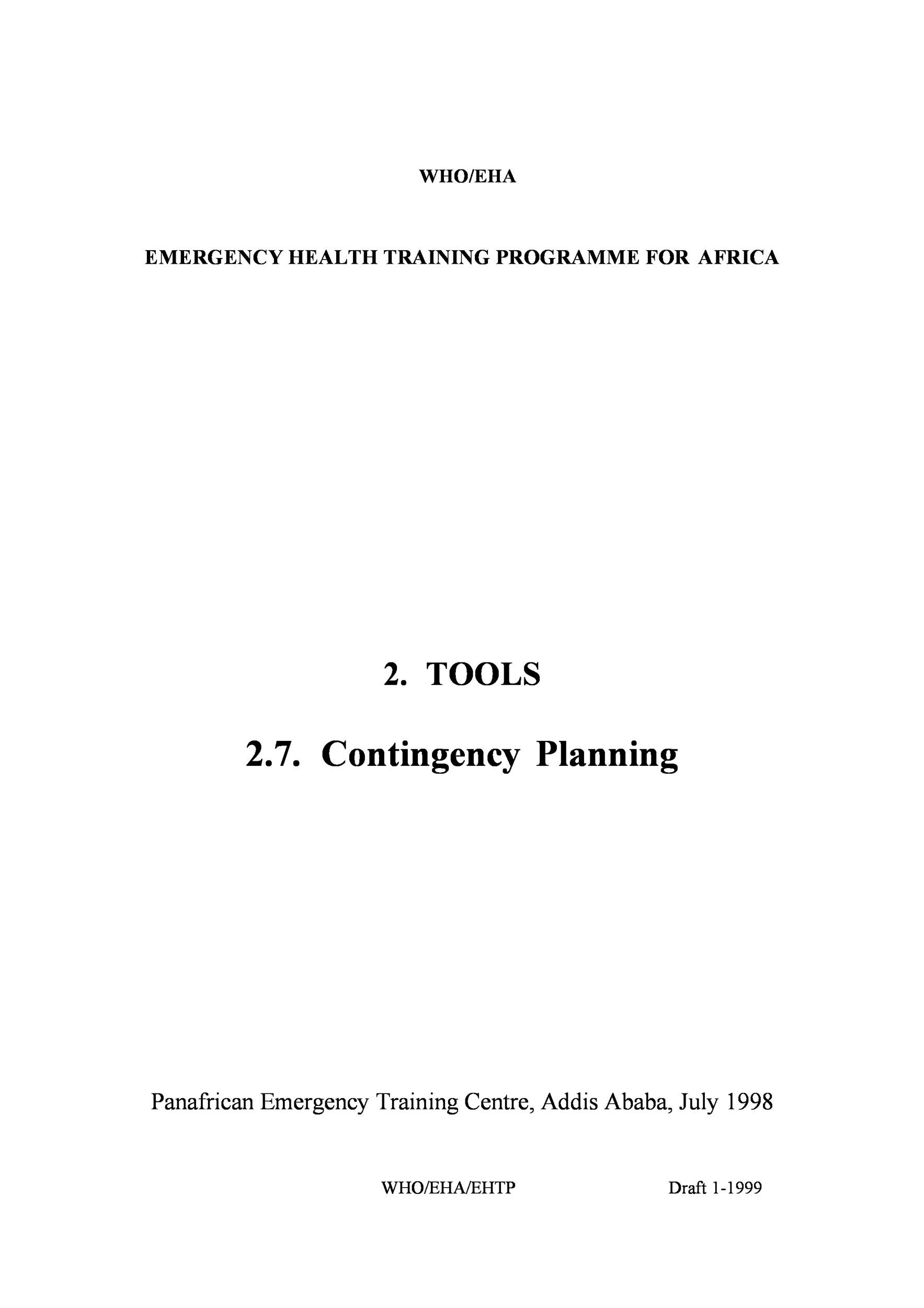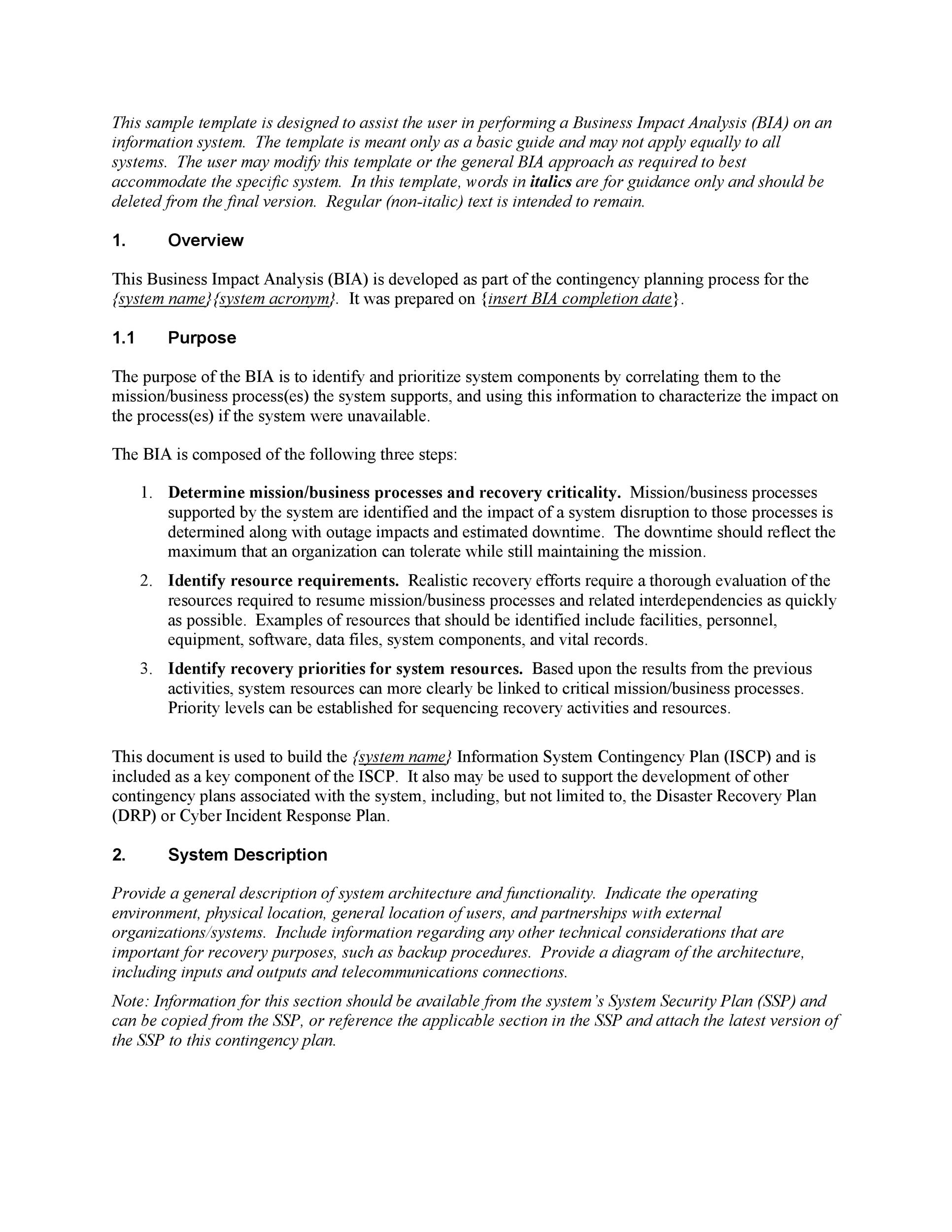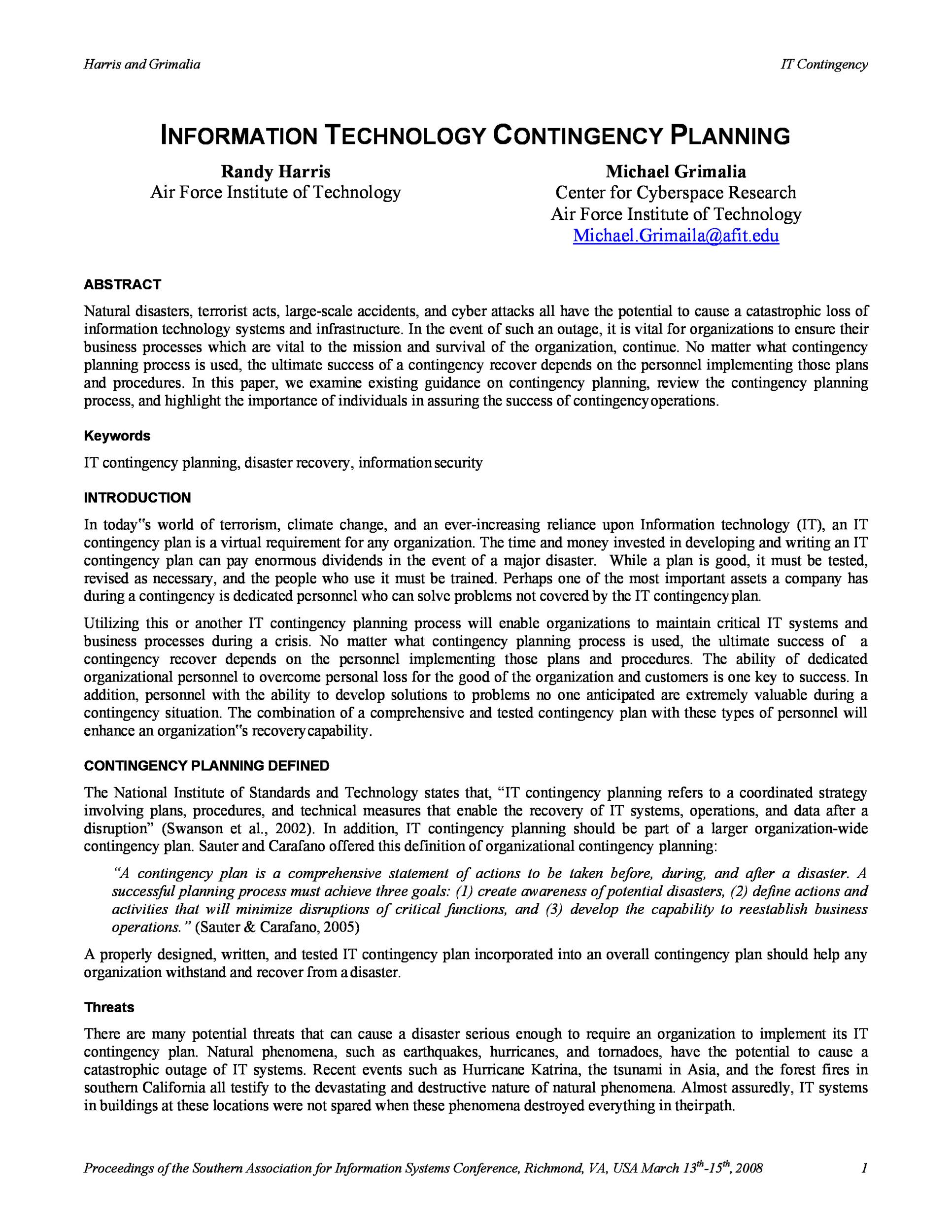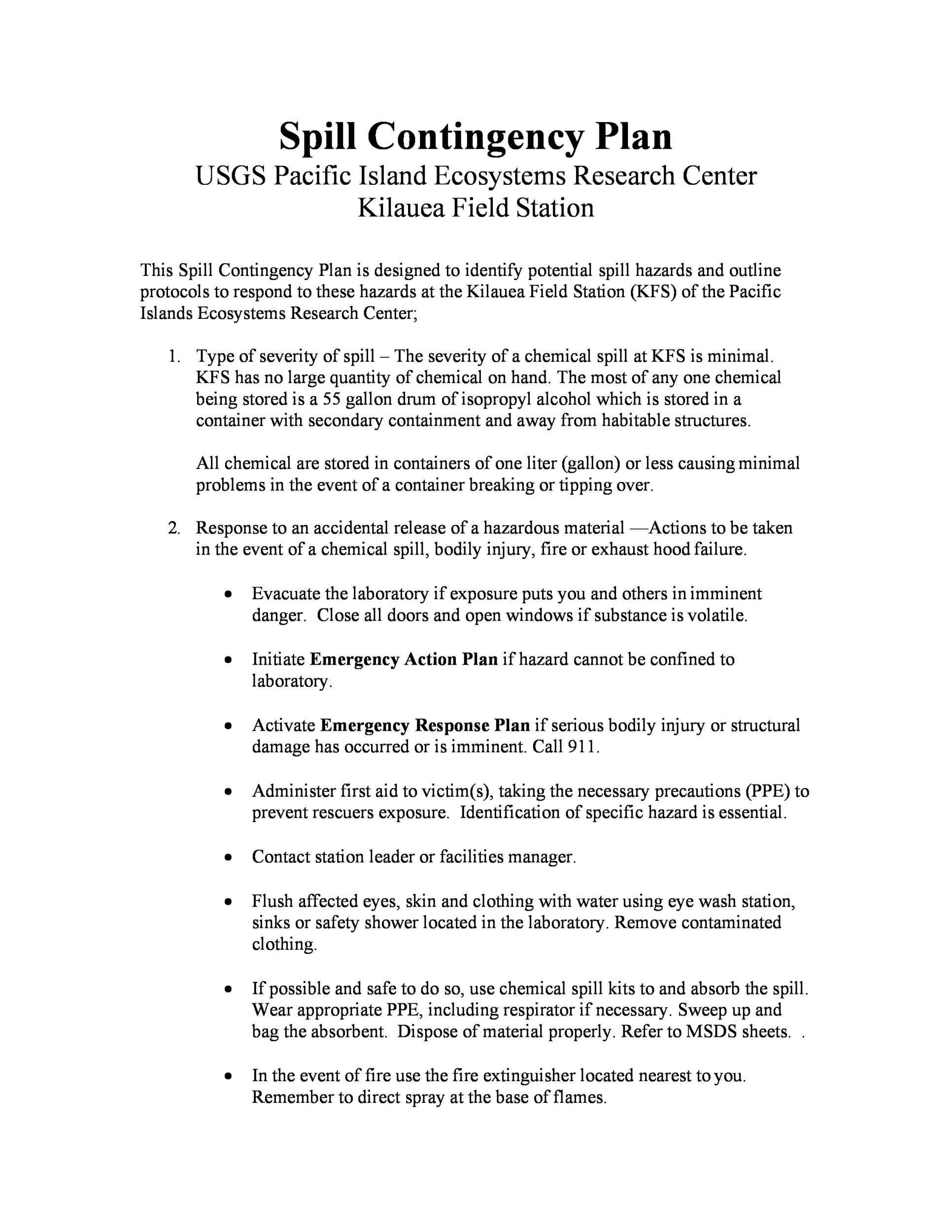Good strategies always involve a contingency plan in case the original plan backfires. In some cases, the original plan may not be as successful as you expect which is why you need a contingency plan example to achieve the same goal. We have heard the term “Plan B” before and this in its simplest way, is a contingency plan.
Table of Contents
- 1 Contingency Plan Examples
- 2 What is a contingency plan?
- 3 Contingency Plan Templates
- 4 When to use a contingency plan?
- 5 Using a contingency plan example in risk project management
- 6 Business Contingency Plan Templates
- 7 Steps in contingency planning
- 8 Creating your contingency plan
- 9 Contingency Plan Samples
- 10 The challenges that may come with contingency planning
Contingency Plan Examples
What is a contingency plan?
The steps taken by an organization when an unexpected situation or event occurs is a contingency plan. A contingency plan example may be positive like when there’s an unexpected surplus in the cash flow. But more often than not, the contingency planning process mostly refers to negative events.
The events which might have a bearing on the organization’s financial health, reputation or on its ability to continue with business operations. Such events may include natural disasters, fire, network failure, and a data breach, to name a few.
Having a contingency plan template helps you make sure that there’s always a continuity in the business. Most of the bigger business organizations have sets of business contingency plan templates for various potential threats. These undergo extensive research and the resulting appropriate responses get subjected to full practice even before the crisis occurs.
You can consider a contingency plan as a proactive approach as compared to crisis management, which is more of a reactive approach. Having a contingency plan ensures that you’re always prepared for any eventuality. Conversely, a plan for crisis management enables you to control the response after the eventuality occurs.
Contingency Plan Templates
When to use a contingency plan?
Also, keep in mind that the design of a contingency plan template is only for risks that can you can identify and not for unknown or unidentified risks. This is for the simple reason that you cannot make a plan if you don’t know the risk.
It’s also worth noting that contingency plans don’t only exist in anticipation should things go wrong but you can also create one to make the most of strategic opportunities.
For instance, you have come to know of a new type of software for training that’s about to get released soon. Should this occur during the project, you can create a contingency plan on how to include this into the training stage of your project.
Using a contingency plan example in risk project management
As mentioned earlier, a contingency plan example responds to a negative event that might affect or tarnish the reputation of an organization or its financial standing. In business, however, a business contingency plan template isn’t always negative. There are cases of positive contingency plans too.
Also, keep in mind that the contingency planning process is a proactive strategy, unlike crisis management which is a reaction to something that has happened. A contingency plan accounts for any disruptive events to ensure that the company is always prepared if and when such events should occur.
Contingency plans are usually part of the risk management department and project managers should know that the plan is simply an outline. However, there are times when the project may extend beyond this. This means that the manager can be more prepared to make changes in the plan if he deems it would be more effective.
Risk management isn’t the same as the contingency planning process. Risk management is more about establishing, assessing, mitigating, avoiding, sharing, transferring, and accepting risks, whereas a contingency plan focuses on developing steps for when a risk occurs. But they share a common aspect. They both describe the steps to take in such an occurrence.
In its simplest form, a contingency plan definition is what you should do when an unexpected event takes place. Simpler still is “What if….?”, then creating an outline of the steps that answer this question.
Business Contingency Plan Templates
Steps in contingency planning
Project management always involves several entry points for risks that you have to consider for a contingency plan example. Here are some risk factors that you should take into account for a contingency plan template:
- The physical aspect where losses can happen caused by damage to facilities, equipment or information because of natural disasters or an accident.
- Technical issues may be a risk factor too, where the system stops functioning as needed for the delivery of the project as scheduled and within the budget.
- Human resources can be another risk too as teams may leave projects, get sick or get terminated.
- In a much larger scale, risk factors beyond the project manager’s control are social and political changes. As an example, you can work with a contract which can drastically change depending on who’s in control. Nothing remains stable with risk factors. Communities can even protest against projects and bring them to a halt.
- There are also liability issues where there are potential threats in the form of compensation plans and legal actions.
Here are the basic steps in the contingency planning process:
- Make it a point to know which resources can you use in the event of an emergency and in which part of the contingency plan you can apply these resources.
- Identify important dates that, if you miss, might negatively affect the plan. For instance, getting approval from committees which rarely meet.
- Know your plan. Check its weaknesses and strengths. Identify slack which you may find.
- Check for any points in the plan where you can apply alternative routes and evaluate each scenario to make your plan more flexible.
- Use your knowledge and experience in discerning patterns in the ebb and flow of the activities in your project to make it more efficient.
Creating your contingency plan
You need a lot of planning and research when creating a contingency plan example. But planning ahead, with each plan makes things easier for you. When creating one for your company, follow these steps:
- Identify your resources and prioritize them
Do research throughout the organization so you can identify then prioritize the integral resources in your organization. - Identify the most significant risks
You need to identify any potential threats to the researched resources. If you need to, meet with executives, and employees to get more a holistic picture of how events can affect your resources. To be more precise, bring with you a consultant or a specialist in the identification of risks. - Draft a contingency plan template
Although you may come up with plans for each of the risks individually, it’s recommended to begin with the threats you consider high priority. This refers to the ones which have a high likelihood of occurring and would have the most significant impacts. As time goes by, you may start working toward coming up with plans for the lower-priority risks.
When drafting plans for identified risks, start asking yourself about the steps to take so that the organization can go back to normal operations. Take into account factors like employee activity, communications, timelines, and staff responsibilities. Based on these, you can then make a plan for each of the risks. - Share the plans
Make sure that all employees and stakeholders have access to each plan as soon as you’ve completed them and had them approved. You may want to consider using a mobile application for this very important step.
This could make the contingency plan together with similar documents directly available to all of the employees through their mobile service. This method also ensures that every employee has easy access to the updated plans for when the need arises. - Maintain the plans
As the organization undergoes changes, make sure that you reflect such changes in your business contingency plan template. There’s also a need to rehearse the plan with stakeholders regularly so that the key players know their roles and responsibilities.
Contingency Plan Samples
The challenges that may come with contingency planning
Managers will always get confronted with challenges that they should consider before and while creating contingency plans. These challenges include:
- Only focusing on “Plan A”
By nature, people only want to work on a single solution. This may be the reason why a contingency plan doesn’t get the proper attention it deserves. They all hope “Plan A” succeeds and they think that focusing too much on “Plan B” might potentially be damage their success.
As managers, they should stress how important a contingency plan is as it serves as your safeguard to help facilitate success instead of obstructing it. This means that the contingency plan should never get shelved. Instead, you must make it readily accessible. - A small probability of using the plan
Because of the small probability that you will ever use the contingency plan, many believe there’s no urgency in creating one. That means the plan could find itself at the very bottom of the company’s list of tasks if anyone will create it at all.
There is a need for this plan for any project, even if the company has to invest a little more in it. When you decide to create a comprehensive contingency plan, you will feel the pay off when you end up needing it.














































